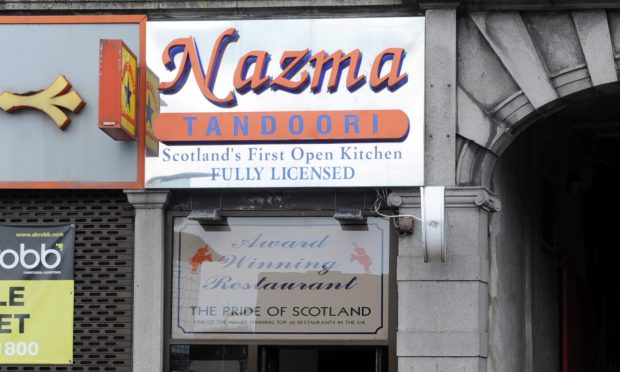
Pennsylvania and most of its municipalities seem to be on track to commit their roughly $13 billion in federal pandemic relief funding as the Dec. 31 deadline approaches. Because of the U.
S. Treasury’s reporting requirements, governments’ progress is likely further ahead than indicated in the most recent dataset that is publicly available. But that also means that it’s difficult to get a clear picture of exactly where municipalities stand with six weeks until the deadline.
The federal State and Local Fiscal Recovery Funds program gave $350 billion to tens of thousands of state, county, city, tribal, territorial, and local governments as a part of the 2021 American Rescue Plan Act. Researchers have described it as “the largest one-time transfer of multipurpose aid in the last 50 years.” The relief funding has given governments across the country a lifeline to tackle the economic and health impacts of COVID-19.
Now governments are in the home stretch to finalize how to earmark their remaining aid dollars or risk returning them. The funding included $7.29 billion for the Commonwealth of Pennsylvania, $4.
95 billion for its largest cities and counties, and $1.21 billion for smaller municipalities, according to data from the Department of Community and Economic Development and the U.S.
Treasury. “States and the largest cities and counties have reported budgeting 95% of their total SLFRF funds to specific projects,” a U.S.
Treasury official told Spotlight PA in an email. “Based on the pace of past reporting ..
. recipients are on track to obligate nearly all SLFRF funds in advance of the deadline.” Supplementing lost revenue, paying for public health and safety services, assisting local businesses, and addressing infrastructure needs are among the program’s objectives.
The commonwealth has obligated — by placing orders for services or entering into contracts — $7.12 billion to 49 projects, according to a report it submitted to the U.S.
Treasury at the end of September. Pennsylvania spent over half of the amount to counteract revenue loss in the state General Fund. It also funded the Whole-Home Repairs Program, agricultural conservation, and community violence prevention.
As of the end of September, the commonwealth had $166.9 million left to obligate, or about 2.29% of its total funding.
The administration will obligate all relief funds by the deadline, a spokesperson for Democratic Gov. Josh Shapiro told Spotlight PA. Seventy governments in Pennsylvania — counties and cities with larger populations — received more than $10 million each in relief funding.
Collectively, they had roughly $1.66 billion — or about 34% of funding — left to commit six months ahead of the deadline. With six weeks to go, the amount left to obligate is likely much narrower, as it takes months for the U.
S. Treasury to sort through the information submitted by about 31,000 recipients nationwide and release it to the public. Smaller governments in Pennsylvania had roughly $277 million left to commit as of earlier this year.
They aren’t required to report as often under the guidelines of the program, and it’s likely that their progress is further along than reflected in the latest data available publicly from the U.S. Treasury, which includes obligations through the end of March.
That’s the case in Williamsport. Categorized as a metropolitan city in the program, it received nearly $25.5 million.
In the latest report to the Treasury, the city had about $4.6 million to go, but City Council President Adam Yoder told Spotlight PA that the actual unobligated amount as of early November was closer to less than $1.5 million.
City leaders have been “pretty aggressive” in maximizing the funding, Yoder said. They created a comprehensive budget at the start of the program and identified early on what projects to spend on. The work before them now is to reallocate money from projects that came in under budget to those that went over, he said.
A notable portion of the funding went toward replacing Williamsport’s lost revenue and supporting core government operations, federal data showed. The city claimed $10 million, the maximum that could be reported without having to prove the actual revenue loss. Yoder said the pandemic exacerbated some of the underlying issues his city and others in rural Pennsylvania were already experiencing — population decline chief among them.
He told Spotlight PA that the city used the funding to expand its community and economic development efforts and invest in parks and recreation that could draw people to the area. “We really put a focus on helping position ourselves to come back as best as we could,” Yoder said. He’s hoping the funding will, over time, “help revitalize our tax base.
” About 100 miles southwest, Altoona is in a similar boat. The city got more than $39 million from the program and is on track to commit all of its allocation by the deadline, according to Mayor Matt Pacifico. Altoona’s population exceeds Williamsport’s, and the city has “more than enough needs” to fill under the guidelines of the relief funds, Pacifico told Spotlight PA.
The city allocated about $14 million toward stormwater facility upgrades, a renovation that was sorely needed after destructive flooding in 2021, Pacifico said. A partnership between the city and Blair County’s development corporation established a $5 million loan fund to help small businesses, he added. A new comprehensive plan for the city, partially funded by the program, created a vision for Altoona’s future growth that goes beyond the sunset of this federal fund.
“We’ve never come into this amount of money in one large sum,” Pacifico said. He said the relatively simple reporting requirements and “the flexibility that they allowed cities to use [the funding] in the way that best worked for them” made the aid more meaningful. The easy reporting requirement was especially crucial for smaller municipalities because many had never received federal aid before, said Amanda Kass, an assistant professor at DePaul University, who researches how local governments have used the State and Local Fiscal Recovery Funds.
“It’s an unprecedented amount of money,” Kass told Spotlight PA. “For some places, this is a brand new source of funding.” Data show that many smaller governments have committed all their money to revenue replacement.
This includes salaries and benefits of public employees, upgrades to government technology and facilities, and costs of maintaining or building infrastructure. Under U.S.
Treasury rules, governments didn’t need to prove how much revenue they lost if they claimed a standard allowance of up to $10 million. Kass says this decision was made to ease the reporting burden for so-called Tier 5 recipients — any nontribal government receiving less than $10 million in federal pandemic relief. Nearly two-thirds of the 2,140 Tier 5 entities in Pennsylvania that reported at the end of March committed all their money to revenue replacement, according to the Treasury.
Kass said the flexibility of the funding design benefitted local governments but also made the money’s specific impacts harder to track. She is researching whether fiscally distressed municipalities used the dollars differently from those with healthy finances. The U.
S. Treasury said it is continuing outreach to help recipients with obligating the funds ahead of the Dec. 31 deadline.
90.5 WESA partners with Spotlight PA, a collaborative, reader-funded newsroom producing accountability journalism for all of Pennsylvania. More at spotlightpa.
org ..














